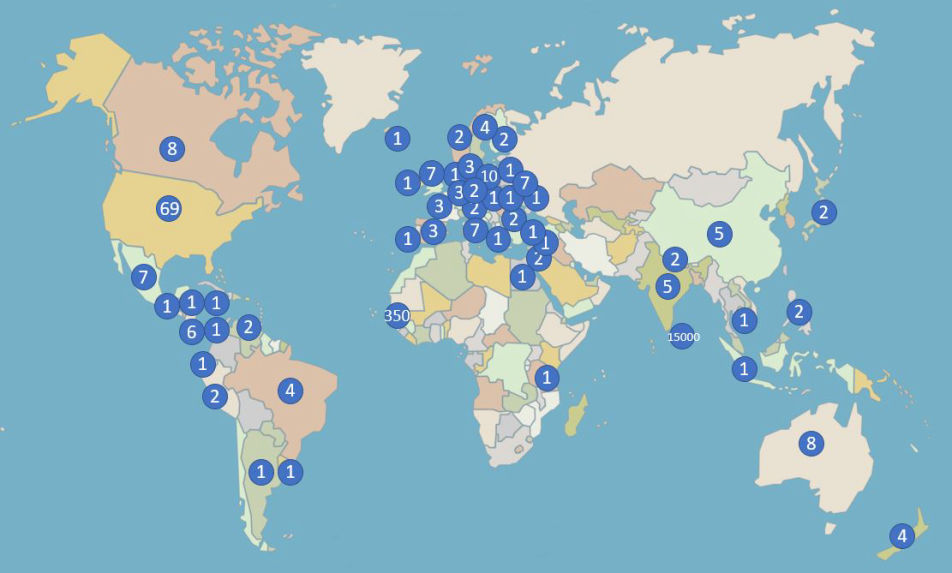
This map shows the number of the ecovillages around the Earth.
Based on their details we see the following tendencies.
Not a simple task to find out the numbers of the eco-villages worldwide. Different sources give different data.
We relied on two network websites (GEN and FIC) as well as a couple of books and specific websites of the ecovillages to know more.
Businesses, farms or even couples like to call themselves ecovillage, so we decided to set up our own criteria to define what is ecovillage and what is not. (The number of the self-proclamied ecovillages is about 3 thousands.)
Firstly, it has to be a community. We were generous to draw the line at the population of ten. Below, it is not a community, only a team. Even between ten and 50, it can be anything, however a group of ten people or above can grow into a viable community.
Secondly, the community has to be sustainable to a certain degree. It refers mainly to food and energy production, waste management and local employment.
Based on our criteria we found 207 eco-villages worldwide with about 20 thousand residents. Not so impressive, to be honest.

In the USA and Australia eco-villages are formed primarily to live a sustainable lifestyle both socially and environmentally. Their main activity is farming. In South-America the eco-villages have international members, they are not local initiatives. The same is true for the eco-villages in India, where all the five villages have mostly western population. Their main profile is lifestyle and wellness service (e.g. yoga, meditation). In Europe, beside farming, most ecovillages carry out educational activities, partly as a mission, partly for livelihood.
There are two eco-village networks, which don't fit into the traditional ecovillage concept. Both are in the developing world, one in Senegal, the other in Sri Lanka. They try to help and improve the lives of existing villages. Sarvodaya in Sri Lanka organises 15 thousand villages. Colufifa in Senegal has 350 villages to look after. The main problem with them that they are not bottom-up organised, and mostly even the residents have no idea that they live in an eco-village, so we don't include them into our statistics.
As seen, there are "white" areas, where eco-villages don't exist, mostly in Africa, Russia and Middle-East. Russia was explained when we found a reference that Putin has to approve in person any initiative to organise a bottom-up community.
As for the Eastern world, I would leave it to the reader to find out the reason of zero demand for a sustainable lifestyle.
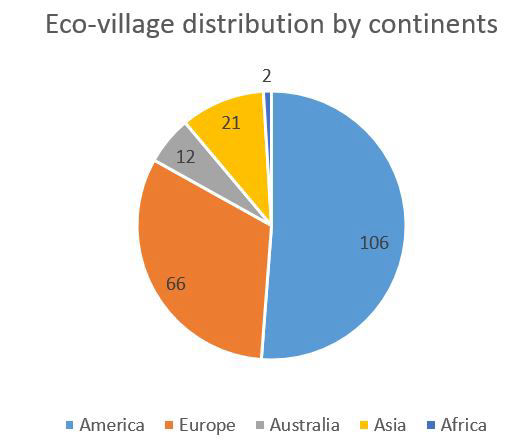
About half of the eco-villages are in the USA
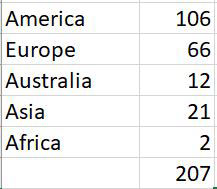
Number of the eco-villages by continents
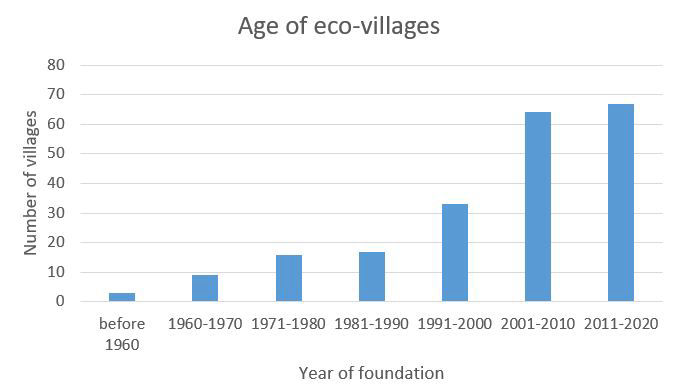
Eco-villages have their life-cycles. Some breaks up while others come into existence. People move in and out, sometimes die.
The first eco-villages turned up in the middle of the past century. Interesting trend that between 2000 and 2010 their number nearly doubled, while in the past decade the same number, about 70 new villages were founded. Our theory that there are more newly founded villages, but their population is below ten -- yet.
The bulk of the eco-villages has a population between 20 and 50.
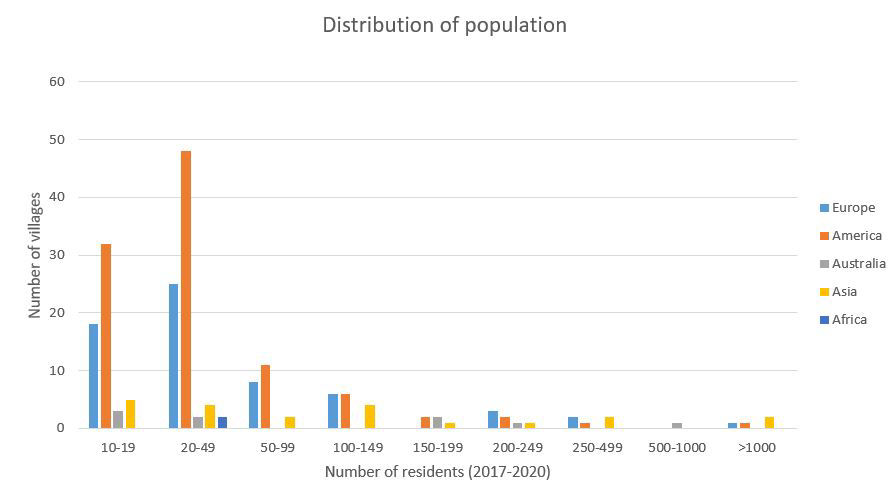

32% of the eco-villages are self-reliant in energy, using renewable energy sources.
61% of the villages top-up their energy from renewable sources.
18% of eco-villages produce their total food locally. Many villages also sells food produced on their farm.
75% of the eco-villages produce the bulk of their food, but not all.

20% of the eco-villages are self-reliant in energy, using renewable energy sources.
59% of the villages top-up their energy from renewable sources.
12% of eco-villages produce their total food locally.
70% of the eco-villages produce the bulk of their food, but not all.